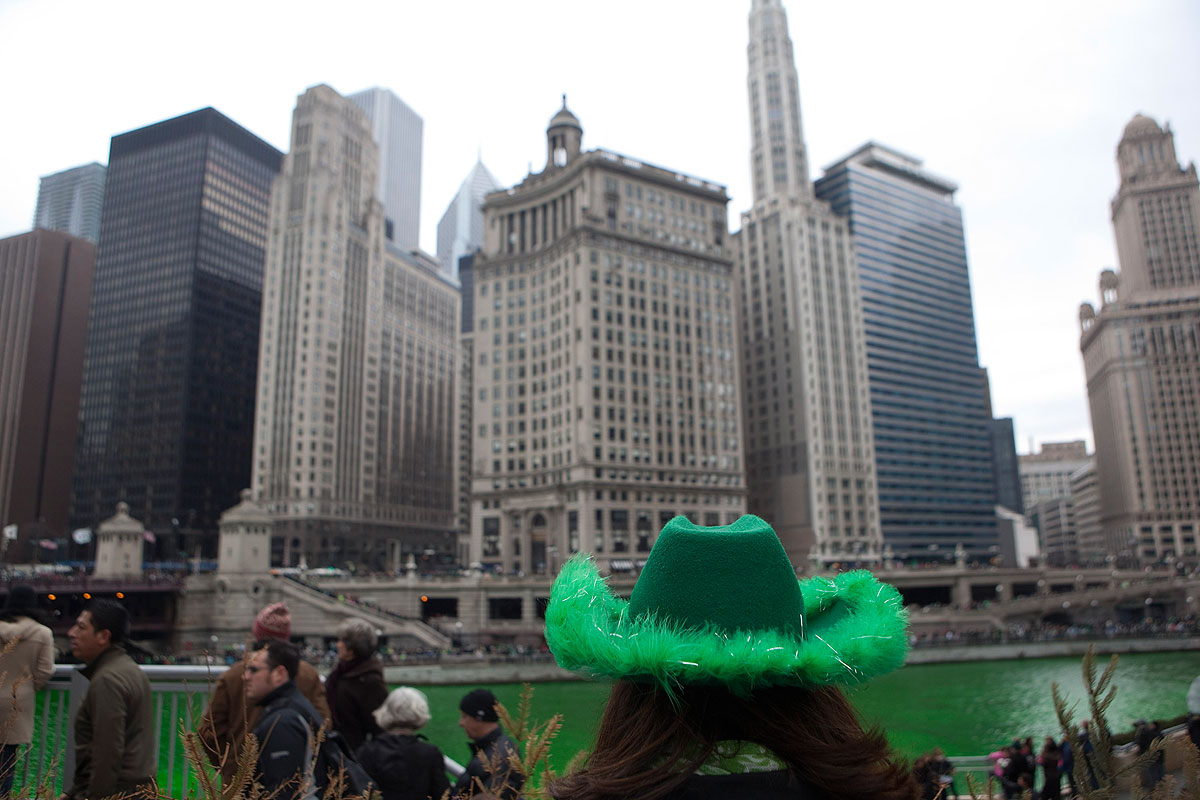St. Patrick's Day is upon us and with it reflections on immigration, like this Heidi Stevens piece about Bridget Gainer:
"The real story of St. Patrick's Day is people were fleeing economic or religious persecution," Gainer said. "Not long ago, it was 'Irish need not apply,' and there are a lot of parallels to what this country is going through right now."
Gainer, who says her maternal grandmother left Ireland for the U.S., by herself, when she was 19, hopes Chicagoans (indeed, Americans) will spend part of Friday — and beyond — reflecting on the nation's rich history of welcoming and benefiting from immigrants.
While doing some research on Irish immigration to Chicago, I stumbled across a fascinating historical document about some of the city's less-remarked-upon Irish immigrants: those who came much later than the late-19th and early-20th century wave. It's a sociological study of 100 post-World War II Irish immigrants by a man named Patrick Joseph Dillon, who was studying for a master's in social and industrial relations at Loyola in 1954. Dillon himself was an Irish immigrant, educated at St. Joseph's College in County Galway and ordained to the priesthood after studying at St. Columban's Seminary in the small Irish city of Navan. And so he conducted a basic but interesting study on his fellow (but quite different) immigrants, learning why they came and what they had done since arriving.
Why they came is pretty simple: money. Of the hundred, 85 were the children of farmers. Of the 34 male farmer's kids, 34 lived in thatched-roof houses without running water or bathrooms, though Dillon writes that "roughly eighty per cent [of the men's families] were making a comfortable living in Ireland, that is, they came from homes where they had no poverty but a good living without luxury." Most came from the west and southwest, from counties whose names are probably familiar: Cork, Kerry, Clare, Galway, Mayo. These bear some economic resemblance to Appalachia: beautiful but with poor, mountainous land, nice places to visit but hard places to live. "In parts of these counties Nature is a hard master where the brown bog affords poor feeding to livestock and the rocky fields do not yield easily to cultivation," Dillon wrote.
Those who tried to make a living off the farm didn't do much better. Wages for a manual laborer were the equivalent of $15 a week in 1954 American dollars ($136 today). One woman who worked in the civil service in Dublin made $12 a week; in an American bank, she made $280 a month (about $2,536 today).
Though only 26 immigrated with at least a high-school education (four more got one after immigrating, and one got a college degree), all found relatively well-paid jobs. The men worked in a diverse range of blue-collar jobs, evenly distributed among factory and mill work; transportation, CTA, and railroad; carpentry; bricklaying; truck driving; manual labor; and so forth. Only three worked white-collar jobs. Twelve of the 43 women were waitresses; others did office work, nursing, food-store service, and the like.
The men made about $4,000 to $6,000 a year, or about $36,000 to $54,000 in today's dollars; the women typically made less; one said that the average salary for a waitress was about $4,000 a year.
Yet they were able to save a considerable amount of money; Dillon estimated that a man on an average salary ($4,500, a little over $40,000 today) could save about $1,500 a year (about $13,500) without serious scrimping: $400 a year on a car (about $3,600, which more than half the men had), $500 on entertainment (about $4,500, though it varied a lot and "those who are most social among the group… spent [the] most money"), $500 on clothing and laundry.
The big difference? Room and board came out to an average of $1,040 a year. The average rent for four or five room apartments came to $75 a month, about $679 today. That's just 20 percent of a $4,500 annual salary.
Compare that to now. Spending more than 30 percent of your income is often considered to be "rent burdened." When I looked at that data last year, in almost every neighborhood in Chicago a majority or near-majority of people making $25,000 to $50,000 were rent burdened. Paying $679 a month would be a cheap apartment almost anywhere in Chicago today; for the Irish immigrants of Chicago in the 1950s, it was average.
Jobs were plentiful for them, and the wages were decent. But what seems to have made a dramatic difference was that the rent wasn't too damn high.




